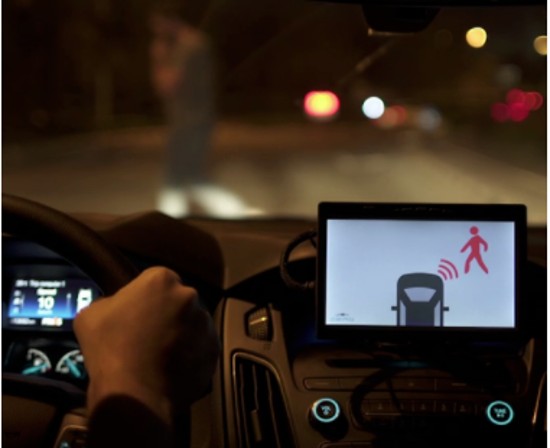Please welcome Dr. Georges Aoude, co-founder and CEO of Derq, a Massachusetts Institute of Technology spinoff focused on the deployment of autonomous vehicles and smart road infrastructure. Derq provides cities and vehicle fleets with an artificial intelligence (AI) platform that powers advanced analytics and connected and autonomous vehicle (AV) applications to improve road safety and better manage traffic. In this his first contribution to 21st Century Tech Blog, Dr. Aoude describes how the confluence of two technologies will make autonomous vehicles and smart road networks safe and ubiquitous by mid-century. As always, I invite you to submit your questions and comments.
At the most recent Consumer Electronics Show (CES) in Las Vegas in January, a new wave of autonomous vehicles (AVs) had their coming-out party. Many of these are concepts and some will survive the cut and be seen on future roads. Much of the focus remains on the technology within these vehicles. But technology embedded in road infrastructure will make AVs work and revolutionize urban transportation.
How is this coming about? Through advancements in AI and 5G network connectivity, the technology for smart-road infrastructure is offering the promise of roads, bridges, and other types of transit systems capable of doing real-time traffic analytics and tackling the most challenging road safety and traffic management problems.
In this article, we look at technology at the center of this transportation revolution: AI-enhanced cameras and LiDARs technology.
AI to Enhance Camera Sensing
Today there are hundreds of thousands of traffic cameras deployed in the U.S. alone, and even millions more when CCTV cameras are considered. These are mainly used for road monitoring and basic traffic management applications. Bringing the latest advancements of AI to these assets, however, immediately improves their basic application performance and unlocks more advanced software applications and use-cases.
AI and Machine Learning deliver superior sensing performance over traditional computer vision in legacy cameras. The two enable more robust, flexible, and accurate detection, tracking and classification of all road users with algorithms that automatically adapt to various lighting and weather conditions. In addition, they provide predictive capabilities to better model road user movements and behaviours and improve road safety. This creates immediate benefits in applications such as road conflict detection and analysis, pedestrian crossing prediction (see image at the top of this article) and infrastructure sensing for AV deployments.
LiDARsTechnology Doesn’t Fully Replace Cameras
LiDARs can provide complementary and sometimes overlapping value to cameras. But there are several cases where LiDARs technology does not perform well, for example, heavy rain and snow. In addition, today’s LiDARs remains expensive to deploy at scale because of high unit price and limited field of view. For example, it takes multiple LiDARs for deployment per intersection where one 360-degree AI camera would prove to be a more cost-effective solution. For many budget-focused communities, therefore, AI cameras remain the technology of choice. Over time, however, as the cost of LiDARs technology drops, transportation networks may want to add it to augment the infrastructure.
Sensor Fusion Will Drive Strong Results
As the cost of LiDARs drops, it will be viewed as a strong addition to AI-enhanced cameras being installed today. Similar to autonomous vehicles, this fusion of different types of sensors will become the go-to approach for smart infrastructure solutions. A comparison of the two technologies follows:
Relative Performance Comparison of Camera vs. LiDARs Today
Feature |
Legacy Camera |
AI-powered Camera (1) |
LiDARs |
AI-powered Camera and LiDARs Fusion |
Challenging lighting (low light, glare) |
Low |
Medium |
High |
High |
Adverse weather conditions (snow, rain, fog) |
Low |
High |
Medium |
High |
Localization |
Low |
Medium |
High |
High |
Classification |
Low |
High |
Medium |
High |
Affordability |
High |
Medium |
Low(2) |
Low(2) |
- Assumes presence of IR or good low-light sensor
- Expected to improve with time
Today cost-effective and performing AI-powered cameras are helping municipalities with traffic management. The addition of LiDAR in the near future, however, will, in the end, significantly improve community road safety, overall traffic flow, and diminish vehicle crashes and fatalities.
















